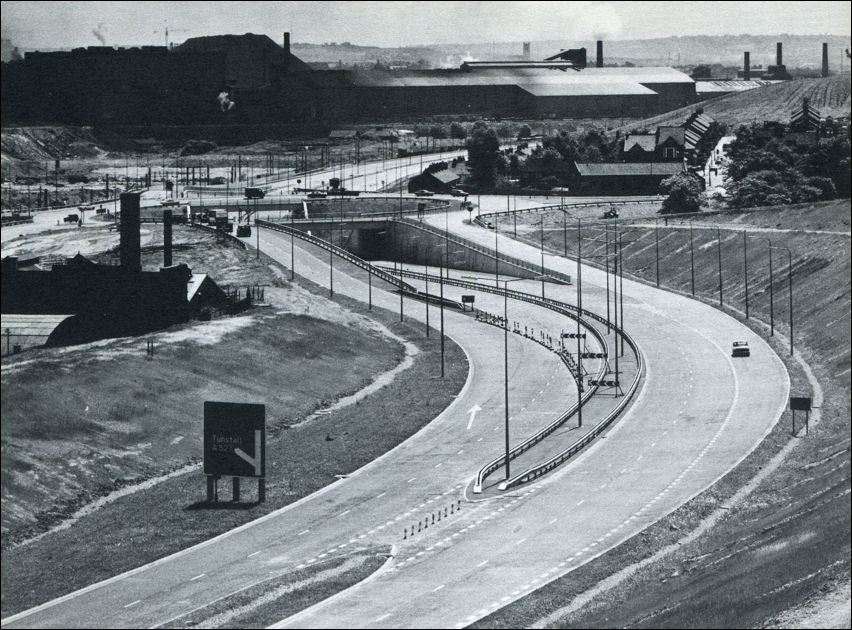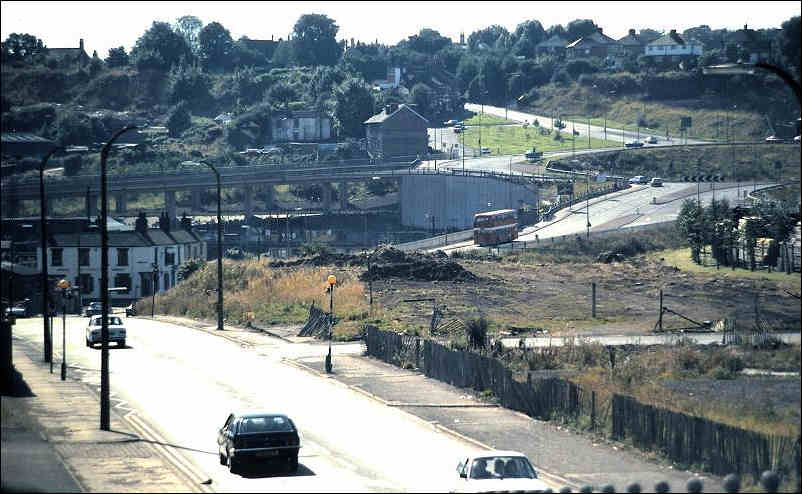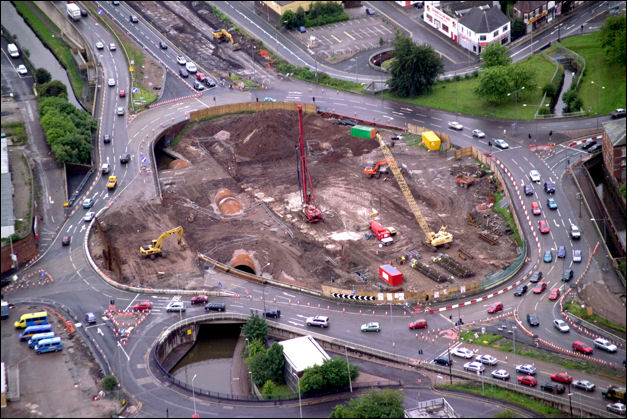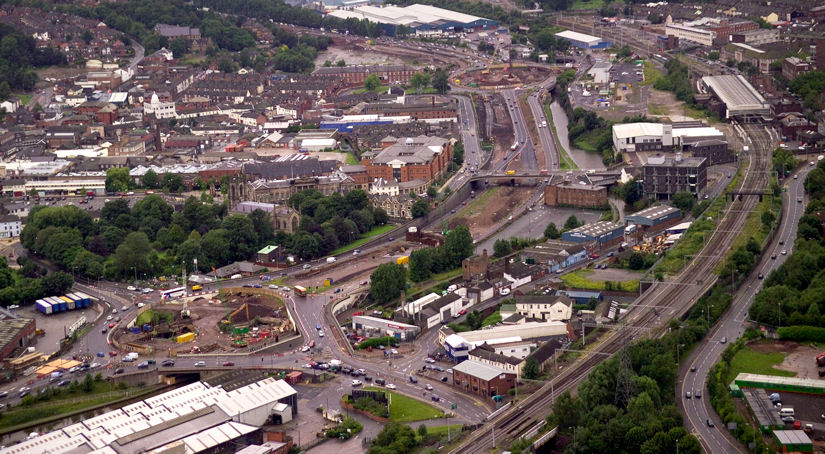![]()
|
|
|
|
|
Stoke-on-Trent - photo of the week |
Advert of the Week
Potworks of the Week
A500 - Potteries D Road

the Stoke-on-Trent 'D-Road' as
it enters the city from the north
the A527 to the left towards Tunstall and to the right is Porthill Bank
immediately on the left is Longbridge Hayes Road.
Photo: John Laing and Sons Ltd, main contractors for the A500
Stoke-on-Trent county Borough Council 1910-1974
|

the A500 'D-Road' at Etruria
the section from J15 of the M6 motorway to this point in Etruria
was completed from 1974-1977
the D-Road running left to right across the centre of the
picture
in the foreground is Lord Street, Etruria and top right is
Basford Bank (the A53)
photo: Ken Cubley
|
By the 1960s,
traffic congestion was a major problem in Stoke-on-Trent, and journeys
across the area sometimes took hours. There was no connection from the
newly constructed M6 to the city. Businesses in the area wanted an easier
route to get their goods out of the area. 1974-1977 - A34
at Hanford to the A53 at Etruria
photos: Ken Cubley 1980's - Hanford
flyover 2004 - 2006 - the
underpasses through Stoke
The work was carried out by Edmund Nuttall Limited and was planned to be completed in spring 2006. Following a number of delays for which it was rumoured the construction company was being fined up to £100,000 a day for not keeping to schedule, the road opened on Tuesday 26 September 2006, with the southbound traffic in the morning and northbound traffic in the afternoon. Several months of additional work was needed to finalise traffic light operations, gardens, and other miscellaneous tasks. from Wikipedia, the free encyclopedia |

the roundabout at the bottom
of Stoke Old Road
in the centre of the roundabout
excavation for the underpass is taking place
to the left the Trent & Mersey canal is being re-routed, to the right is the
Fowlea Brook

Feb 2005 - work on the two
underpasses on the A500 at Stoke
buildings that can be identified on
this photograph include......
Minton & Hollins works, Staffordshire University, Federation House, Stoke
Railway Station,
Stoke Civic Centre, Spode Pottery Works, Stoke Town Hall,
Stoke Minster (St. Peter's), Brook Street houses, Dolby Bottle Kiln.